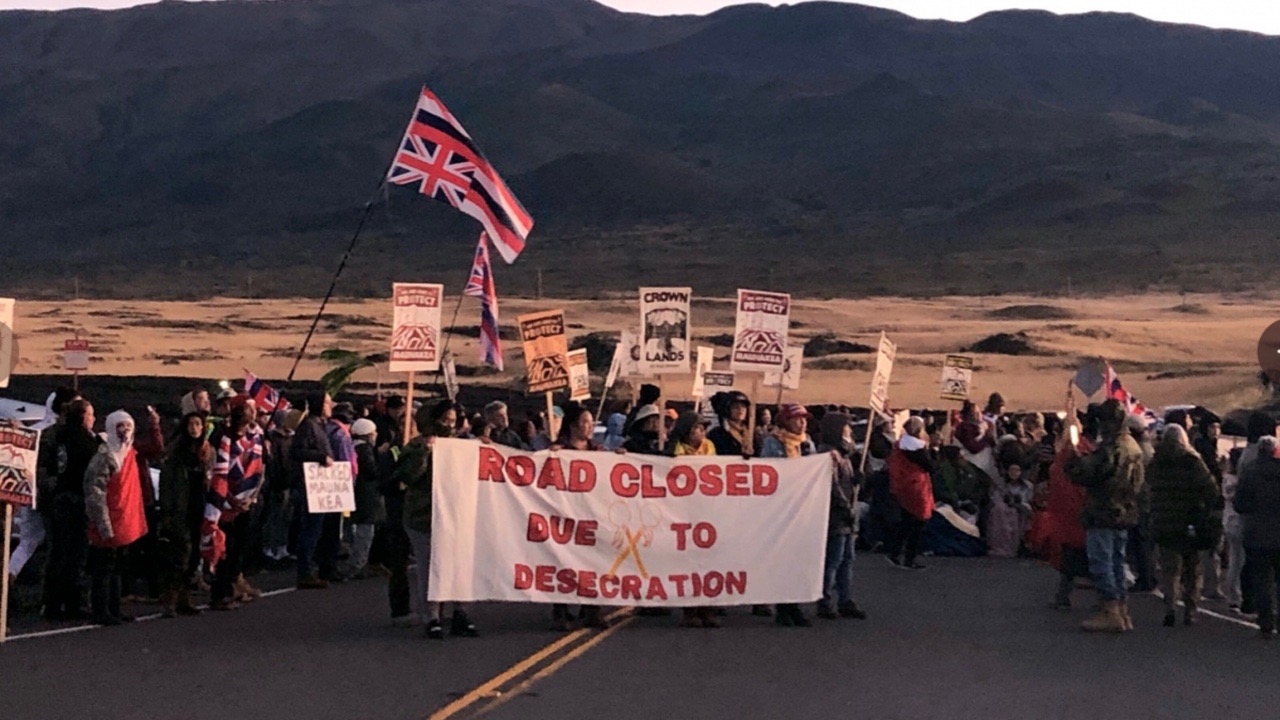On Friday, the Hawaiian State Attorney General’s Office asked for details on the kind of support the Office of Hawaiian Affairs (OHA) has provided to Native protesters, who have been blocking the construction of the controversial Thirty Meters Telescope (TMT) on Mauna Kea. The development came on the same day that the case against 28 of the 38 arrested protesters, was taken over by the State Attorney’s Office from a public prosecutor. The protesters, including 9 kupuna (elders) along with their helpers, stand trial for obstructing the construction of the TMT.
The Attorney General’s Office has refused to release a copy of the subpoena, while the OHA is yet to respond to it. The OHA is an autonomous body with the mandate to work for the welfare of the Native Hawaiians, and is constituted entirely by trustees appointed from within the community. Among its nine trustees is the prominent indigenous activist, Hulu Lindsey, who is among the 9 elders who currently stand trial for obstructing the TMT.
All the protesters, who were arrested over two months ago in July, have since pleaded not guilty to the charges leveled against them. Speaking to Hawaii News Now, Moani Crowell, one of several attorneys working on the case, defended the protesters’ constitutional rights, arguing that the Native Hawaiians had only exercised their constitutionally granted right to religion, as they considered Mauna Kea to be a sacred site.
Obstruction being a minor misdemeanor that does not carry a jail term of more than a month, the 28 protesters will be tried individually by the court. While the subpoena is technically a separate matter from the cases pending in the court, the issue has boiled down to the legitimacy of the construction of the TMT on land that is considered sacred by the Hawaiians.
The OHA has unanimously passed a resolution allowing its members and staff to assist and support the protests. It also recently held a public hearing on the subject.
Tarcila Rivera Zea, an indigenous rights activist from Peru and an expert member of the United Nations Permanent Forum on Indigenous Rights, has also written a letter to the Hawaiian governor David Ige, over these developments. In the letter she expresses solidarity with the movement opposing the construction of the telescope on the sacred summit of Mauna Kea. According to her, “Building the Thirty Meter Telescope goes against the territorial, cultural and spiritual rights of the Indigenous peoples of Hawaii.”
Zea further added that “the development and the future of our cultures are directly linked to our territories for us, Indigenous peoples. Preserving the religious and cultural connection to Mauna Kea is a right of the indigenous peoples of Hawaii which is recognized by international law.”
The UN expert’s letter came within days of the United States Human Rights Network calling for a “de-escalation at Mauna Kea”. Massive protests have been raging for over nine weeks at the mountainous site, where hundreds of indigenous activists have blockaded the main access road to the summit. While stalling the construction of the telescope, the protesters have also forced a month-long shut down of the 13 existing observatories on the top of Mauna Kea.
These observatories were re-opened in mid-August after the government of Hawaii struck a compromise with the protesters. They agreed to allow the state government to build a temporary access road around the protest camps which currently occupy the main access road. In return, the protesters were assured that they will be kept informed about all movements through the temporary road, which remains the only access to the summit of Mauna Kea, so that they may ensure that nothing related to the construction of the controversial Thirty Meter Telescope (TMT) can get through.
In the meanwhile, the management of the TMT International Observatory has decided to apply for a permit for the backup observatory site in Spain. This is a major victory for the Native Hawaiians who have been opposing the project for nearly a decade. It has been demanded that the control over the site be transferred from the University of Hawaii to the Native community.
However, the battle is far from over. The state government, on the other hand, has turned increasingly hostile. Earlier this month, some activists who were part of the blockade on the main access road, were prevented from entering the area for a few hours. State officials also broke down the door to a makeshift camp at the sit-in site, this month. A week later, they destroyed a Hawaiian independence flag in a manner that activists have alleged to be akin to desecration, by cutting right down its middle. Compounding the hostilities, governor Ige has not only defended the cutting down of the flag, but chided the movement for creating situations that “produce an unnecessary reaction”.
The summit of Mauna Kea has been identified as among the rare sites in the world that are near-perfect for astronomical observations. This has divided the scientific community within the US between a majority that values scientific advancement over cultural sensitivities of the Native population, and a vocal minority that is calling for a better understanding of the matter, considering that the site has been forcibly acquired from the Native people. Recently, a US physics professor also made allegedly racist statements against the Indigenous people of Hawaii.
The protest against the construction of the telescope has brought to the fore historical injustices committed by the white colonial settlers in the United States against the Native Hawaiians, since the annexation of the sovereign nation of Hawaii in 1893. The current highhandedness of the US government is reminiscent of that state-sponsored cultural genocide that had led to the widespread desecration of Native lands.





